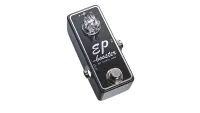MusicRadar Verdict
A sturdy, no-nonsense stompbox that offers two highly usable flavours of boost in one compact and affordable package.
Pros
- +
Two distinct modes providing versatile boosting options.
- +
Robust and well-crafted construction.
- +
Can operate on 18V for enhanced headroom.
Cons
- -
Aesthetic may not appeal to everyone.
MusicRadar's got your back
Name: What is it?
For live performers, having a reliable boost on your pedalboard is essential. Whether you need to ensure that your tasty licks are heard all the way back at the cheap seats or want to inject a healthy dose of saturation into specific riffs, a boost pedal is a guitarist's secret weapon in the battle for extra volume.
I believe boost pedals should be straightforward; sometimes, less is more. It seems Fender agrees. The latest addition to the ever-expanding Hammertone series, the aptly named Boost, embraces a no-frills approach to signal enhancement, featuring a streamlined control layout and a compact design. Two distinct boost flavours are selectable via the Type switch. Mode one employs a clean opamp circuit, delivering a pristine sound that remains colourless - perfect for those who want to boost volume without added grit or distortion. Conversely, mode two engages a JFET circuit that adds harmonic richness and a fatter tone with a bit more compression.

,To shape your tone, both Treble and Bass controls are active, allowing you to boost or cut their frequencies. The centre detents on each control make it easy to dial in a completely flat boost if that suits your style.
Wrapped in a rugged hammered - hence the name - aluminium enclosure and featuring top-mounted jacks for easier pedalboard placement, the Boost can be powered by a battery or a pedalboard power supply, and, aside from the standard 9V, it also operates on 18V for extra headroom. Furthermore, it incorporates a soft-touch relay true bypass switch, with automatic bypass functionality if the pedal loses power.
Specs
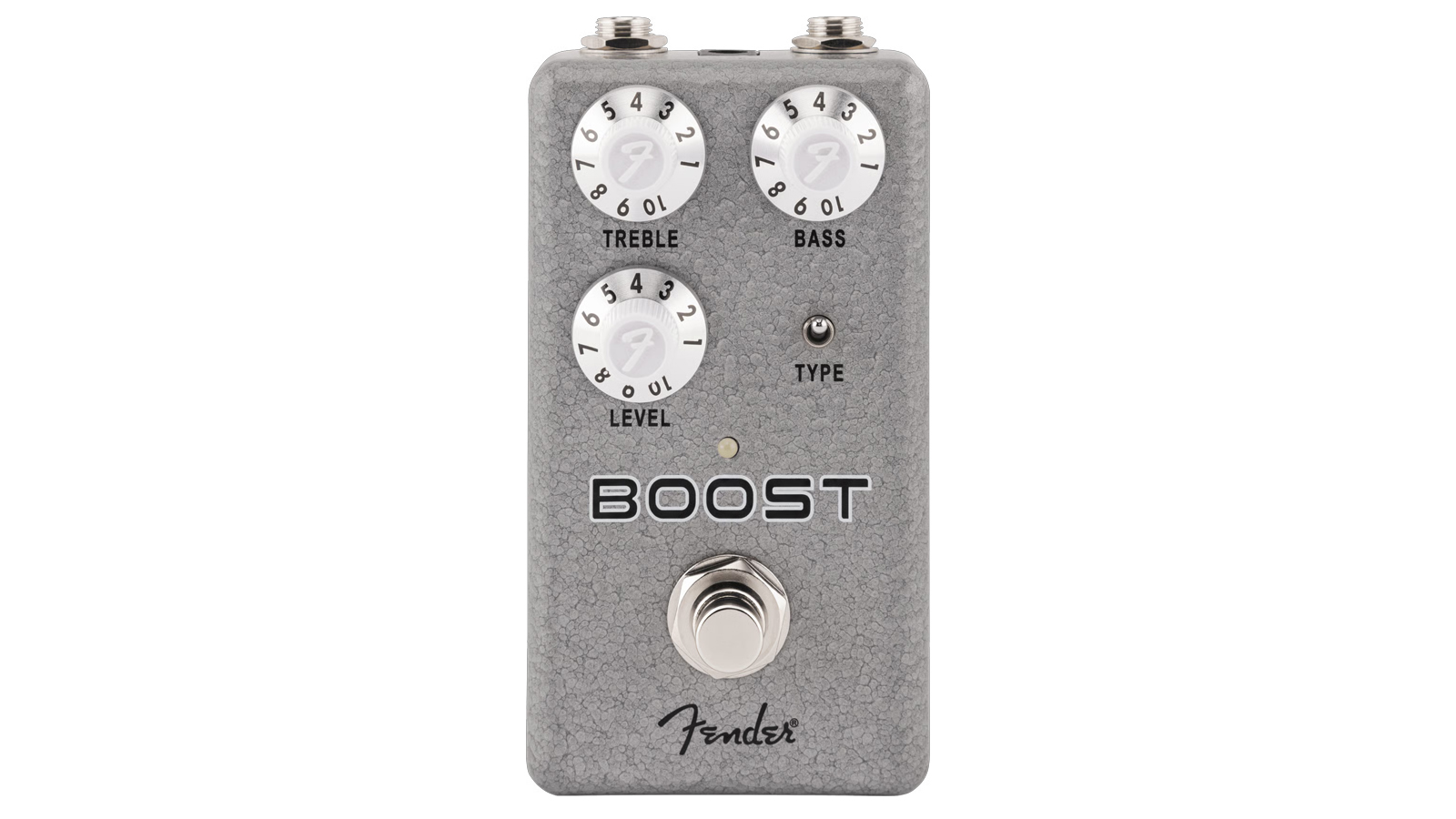
- Launch price: $104.99/£75.99
- Type: JFET boost
- Controls: Level, Bass, Treble, Type
- Features: Selectable clean boost and JFET-based boost. Active Bass and Treble controls both boost and cut frequencies with a centre detent.
- Connectivity: 1/4" input and output
- Bypass: True bypass
- Power: 9V - 18V, 85mA
- Dimensions: H:4.4" X W:2.2" X D:2.44"
- Weight: 250g/0.25kg
- Contact: Fender
Build quality
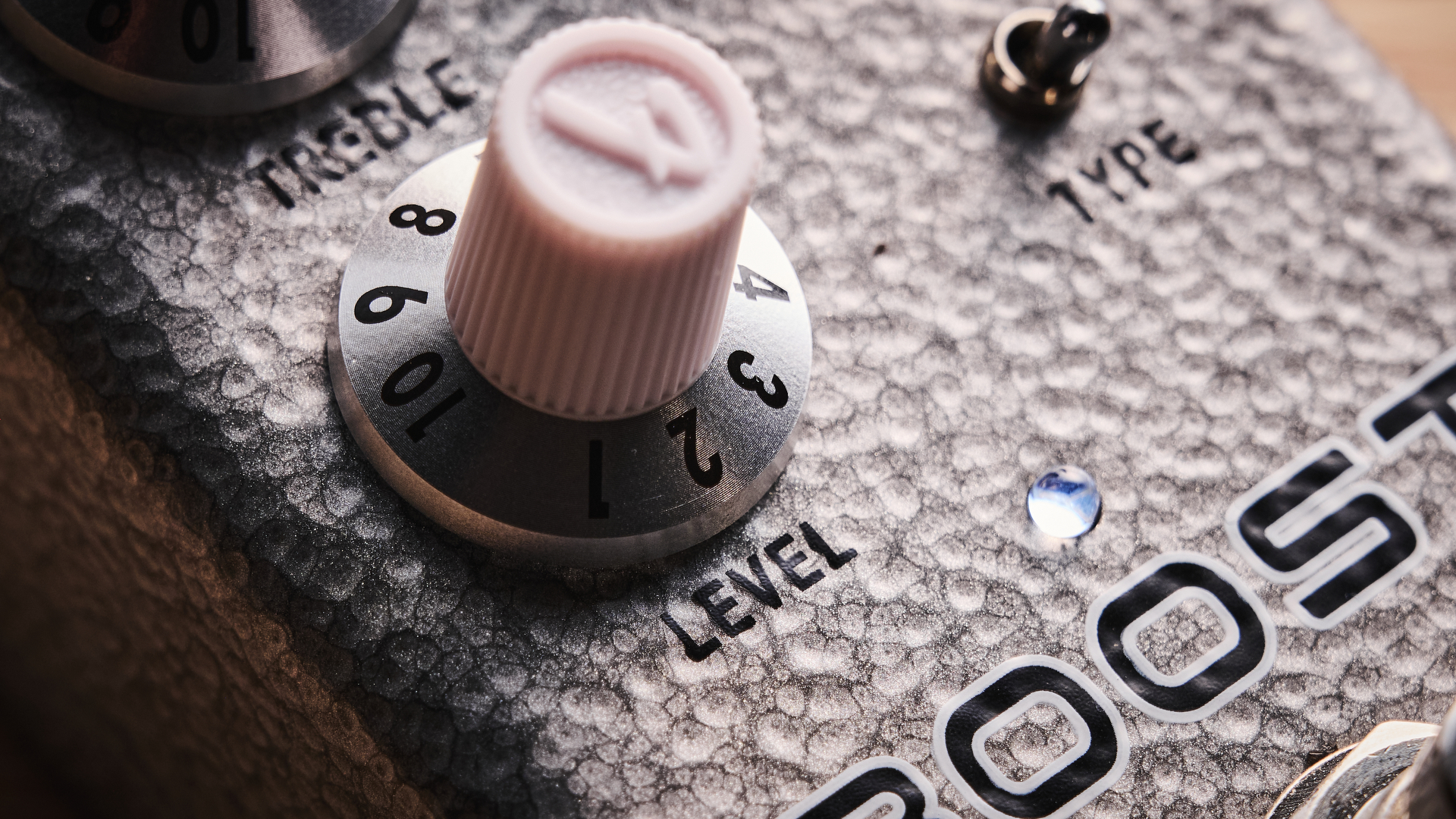
Build quality rating: ★★★★½
One look at the Boost, and you know it’s robust. The unique hammered metal finish creates a very industrial look, but one that’s sure to split opinion. To my eyes, this pedal is a little basic. Now, while others in the Hammertone line have colourful dials to offset the chassis's drab aesthetic, the Boost opts for unassuming white knobs, which, in my opinion, make it look even more boring. In a world where companies are increasingly using the face of pedals as a canvas to showcase beautiful works of art, the Boost feels too plain for me.
However, it’s performance that truly matters, and I’m pleased to report that this affordable boost pedal is solidly built. Like its Hammertone counterparts, the switches and knobs function smoothly, while the footswitch offers a satisfying click when engaged. Aesthetics aside, there really isn't much to complain about here.
Want all the hottest music and gear news, reviews, deals, features and more, direct to your inbox? Sign up here.
Usability
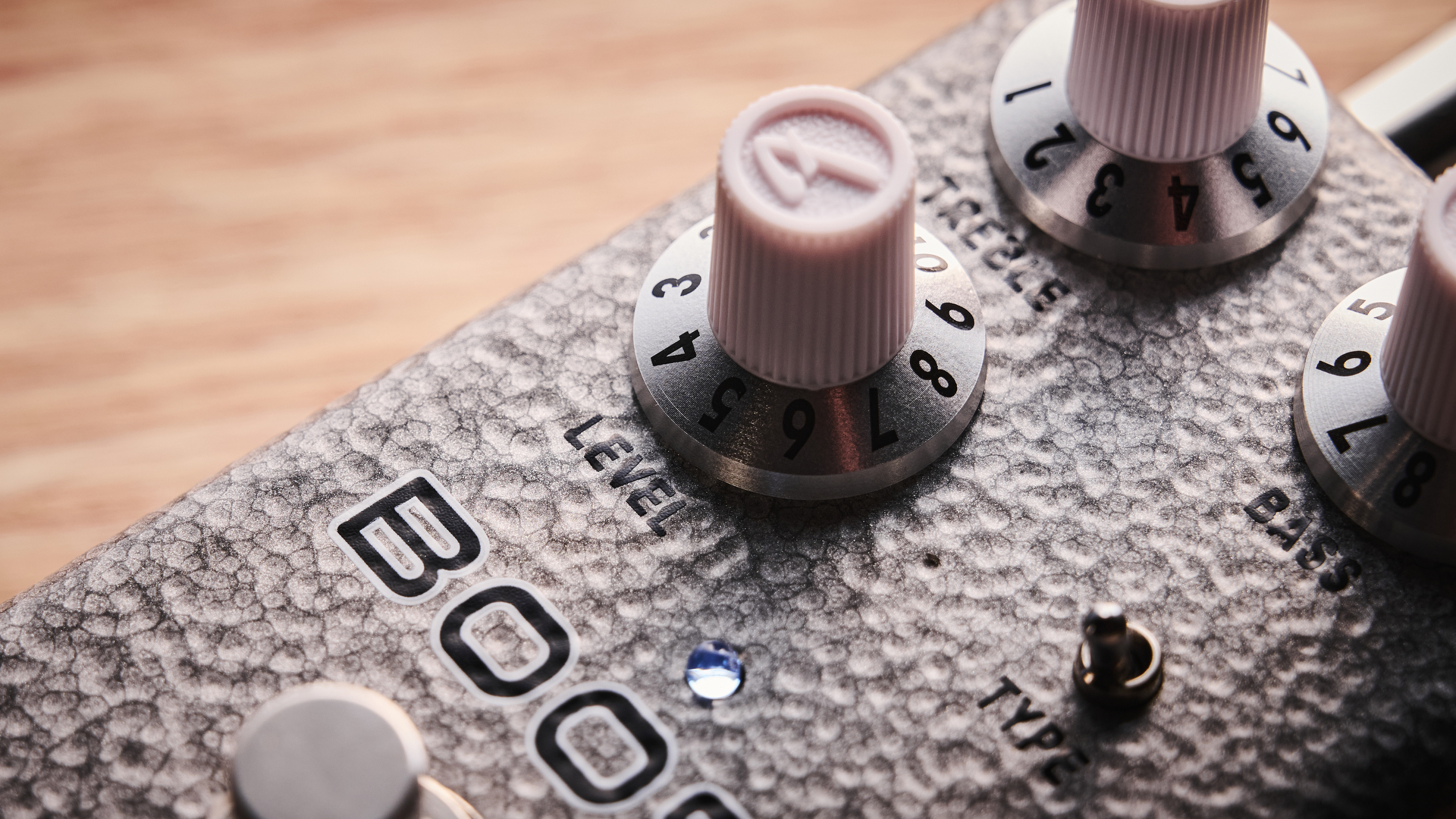
Usability rating: ★★★★★
The Hammertone Boost is slightly smaller than its Boss contemporaries, making it an ideal fit on a crowded pedalboard
As someone who appreciates a pedal with an uncluttered layout, I find the Fender Hammertone Boost to be a shining example of simplicity and functionality - ideal for guitarists who prioritise speed and ease of use.
When I plug in a pedal, I want to dial in my tone without overthinking it, and that’s precisely what the Hammertone Boost delivers. With just three well-labelled knobs for Level, Bass, and Treble, it's impossible to get lost in a maze of options.
In terms of size, the Hammertone Boost is slightly smaller than its Boss contemporaries, making it an ideal fit on a crowded pedalboard. The top-mounted jacks facilitate easier cable management as well. I genuinely believe the Hammertone chassis achieves the perfect size and shape for a pedal: compact enough not to hog valuable pedalboard real estate but substantial enough to be readable and adjustable from a distance.
Sounds
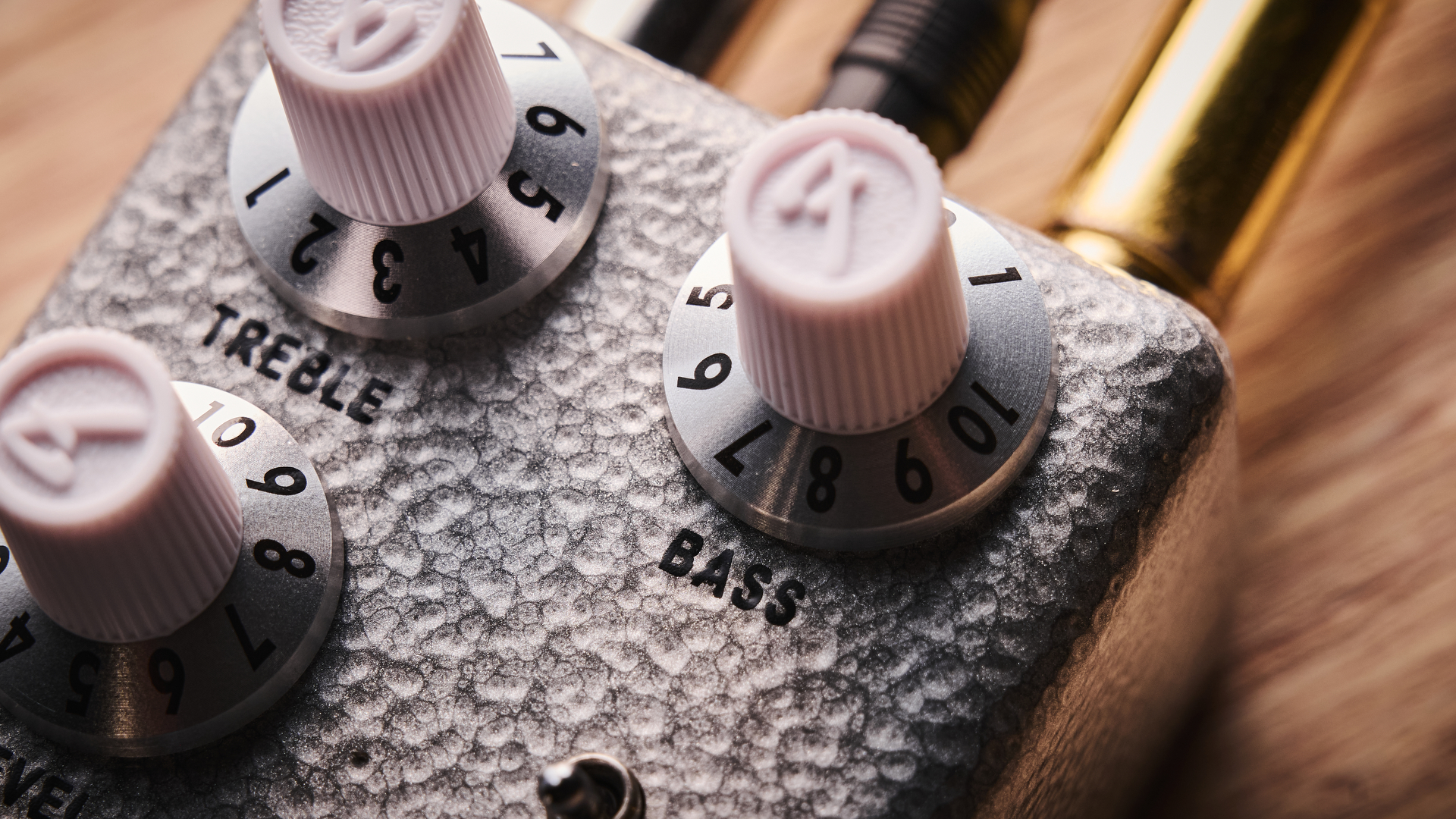
Sounds rating: ★★★★½
When it comes to boost pedals, many guitarists gravitate towards one of two camps. Some prefer a boost that solely increases volume without infusing any colouration, while others enjoy adding a touch of overdrive, transforming their boosted signal into a more intense sound with added sustain and grit.
Keeping this in mind, I’d argue that the Hammertone Boost caters more to those in the first camp. This pedal excels at delivering a completely clean volume boost - and there's plenty of volume on tap! For my review, I paired it with my Fender Telecaster and a Blues Junior amp. Given that the Blues Junior is a small tube amp, it tends to break up quickly; however, I was still able to achieve a pristine clean volume jump with the Hammertone Boost.
Turning the volume beyond halfway, my Telecaster drove the pre-amp tubes hard, generating that rich distortion only obtainable from a small tube amp pushed to its limits. By engaging the mode switch, you activate the JFET circuit, which enriches the boosted signal with added character and harmonic content. If you find a clean boost to be too sterile for your taste, then this mode is certainly worth exploring.
Verdict
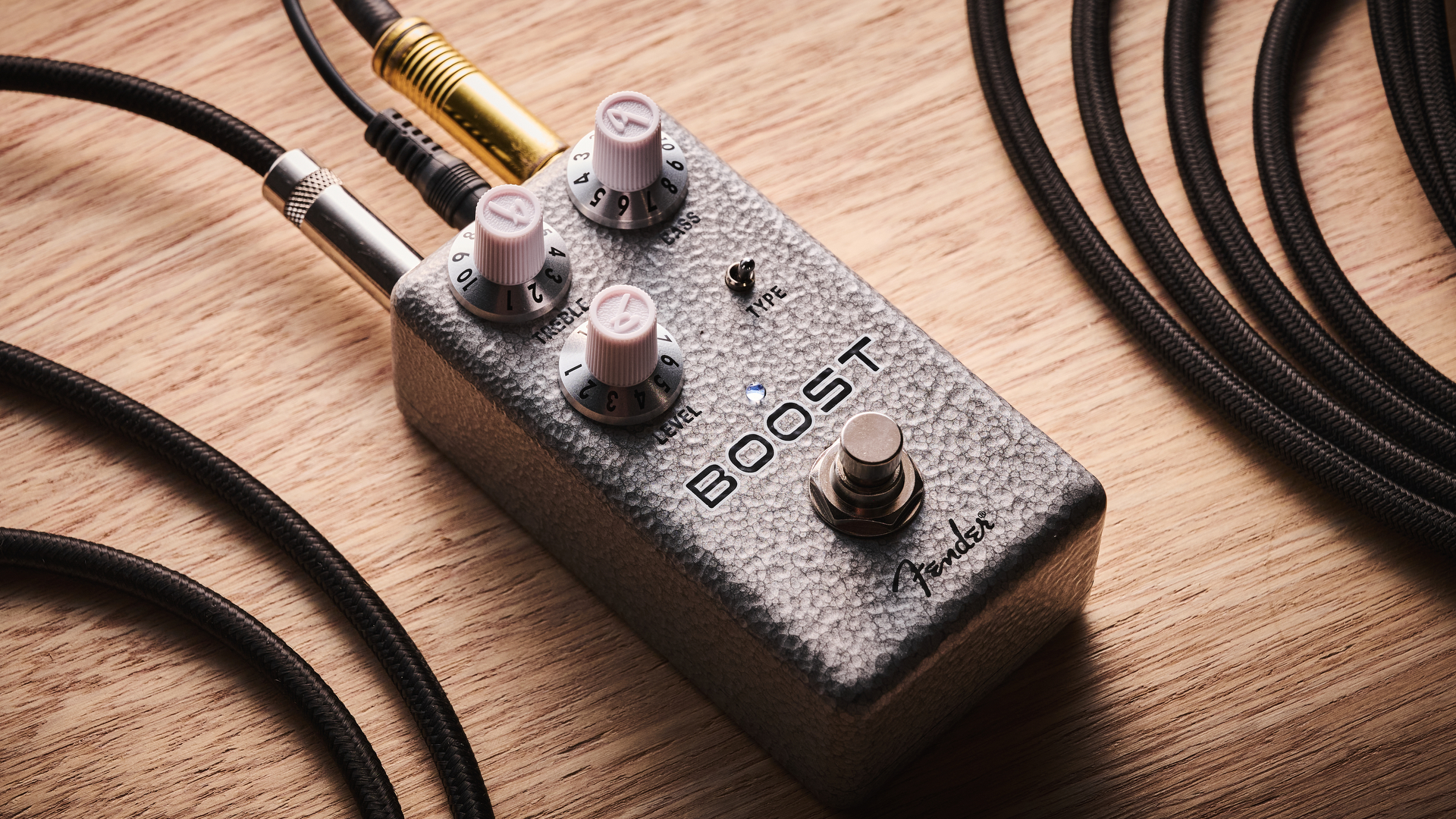
The Hammertone Boost is a fairly simple animal, but one that totally nails the brief. If you are after a straightforward clean boost with powerful tone shaping, housed in an almost indestructible case, then this is the boost for you.
Okay, yes, it’s not exactly a looker, and other boosts on the market do offer more features, but the Hammertone Boost isn’t trying to be anything it’s not. It’s a simple pedal that is easy to use, sounds great, and is good value. Come on, what more do you need?
MusicRadar verdict: A sturdy, no-nonsense stomp that offers two very usable flavours of boost in one neat and affordable package.
Test | Results | Score |
|---|---|---|
Build quality | Well made but the design is a little boring. | ★★★★½ |
Usability | Super easy to dial in and a joy to use. | ★★★★★ |
Sounds | Ideal for completely clean signal boosting. | ★★★★½ |
Overall | A no-nonsense stompbox that is easy to use and sounds great, if you can get past the rather drab appearance. | ★★★★½ |
Also try

TC Electronic Spark Mini - $31 | £39 | €45
<p>Want to keep it simple? Well, you won't get simpler than this. With just one knob and 20dB of gain, there isn't much to this pedal at all.Xotic EP Booster - $159 | £129 | €125
<p>The Xotic EP-3 models itself on the preamp section of the Echoplex EP-3, a classic tape echo and has become somewhat of a mainstay among pros and amateur boards alike. <p>Read more: <a href="https://www.musicradar.com/reviews/guitars/xotic-ep-booster-605854"><strong>Xotic EP Booster reviewMXR Micro Amp + - $169 | £154 | €152
And other simple and affordable boost, this time from pedal giants, MXR. This pedal works particularly well to add extra gain to overdrive and fuzz pedals.
Hands-on videos
Fender

I'm a Senior Deals Writer at MusicRadar, and I'm responsible for writing and maintaining buyer's guides on the site. As part of my role, I also scour the internet for the best deals I can find on gear and get hands-on with the products for reviews. My gear reviews have been published in prominent publications, including Total Guitar, Guitarist, and Future Music, as well as Guitar World.com. I've also had the privilege of interviewing everyone from Slash to Yungblud, as well as members of Sum 41, Foo Fighters, The Offspring, and many more.
In a previous life, I worked in music retail, selling everything from digital pianos to electric guitars. I'm also a fully qualified sound engineer who holds a first-class Bachelor's degree in Creative Sound Production from the University of Abertay.
You must confirm your public display name before commenting
Please logout and then login again, you will then be prompted to enter your display name.

